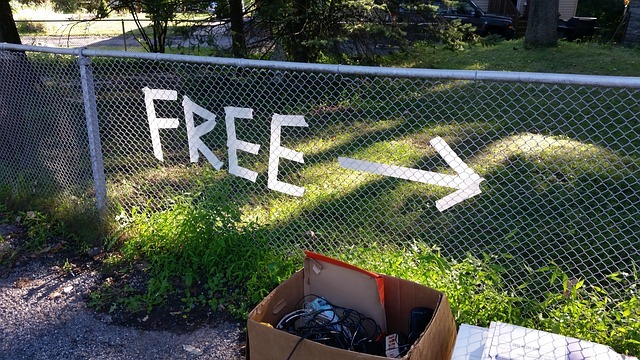I’ve never watched a full episode of Hoarders on A&E, Hoarding: Buried Alive on TLC or any other hoarding show, although I’ve seen enough snippets to understand what they are about.
Basically, some poor soul who is unable to part with anything is given a final chance to change before dire consequences are imposed such as eviction, children being removed, pets taken away, etc. And we get to watch it all unfold before our very eyes. A colleague of mine was the psychologist on a few episodes and he said it was absolutely not scripted. He did not meet the family until he walked in the door and he had no idea how they would respond to his interventions.
The type of hoarding shown on these docu-series is a true mental disorder in the family of Obsessive Compulsive Disorders. People who hoard cannot help themselves and it is psychologically devastating for them throw away whatever it is that they are fixated on. I’ve worked with some hoarders in my clinical practice and I must confess that it is extremely difficult to help these folks change.
As with most mental illness, the percentage of people who truly suffer from the disorder is small (somewhere between 2 and 6 percent of the population). However, 2-6 percent adds up to a large number of individuals (between 6.5 and 19.4 million people in the United States alone).
That’s a lot of people when you think about it.
Now, if you don’t want to know the details of the full disorder, skip this next part (but DO NOT use this as a way of diagnosing yourself!). However, if you are a knowledge hoarder, here are the first four diagnostic criteria of Hoarding Disorder:
A. Persistent difficulty discarding or parting with possessions, regardless of their actual value.
B. This difficulty is due to a perceived need to save the items and to distress associated with discarding them.
C. The difficulty discarding possessions results in the accumulation of possessions that congest and clutter active living areas and substantially compromises their intended use. If living areas are uncluttered, it is only because of the intervention of third parties (e.g., family members, cleaners, authorities).
D. The hoarding causes clinically significant distress or impairment in social, occupational , or other important areas of functioning (including maintaining a safe environment for self and others).
There are a couple of other criteria, but these are the four main points.
By now you might be thinking, “C’mon, I’m 400 words into this post and you haven’t gotten to the point.” Bear with me for just a moment longer.
Substitute the word opportunities for the word possessions and items in the criteria above and make a couple of other minor word changes and we get (changes in italics):
A. Persistent difficulty discarding or parting with opportunities, regardless of their actual value.
B. This difficulty is due to a perceived need to say yes to opportunities and to distress associated with discarding them.
C. The difficulty discarding opportunities results in the accumulation of opportunities that congest and clutter active important life events and substantially compromises their intended use. If important life events are uncluttered, it is only because of the intervention of third parties (e.g., family members, mentors, therapists).
D. The hoarding causes clinically significant distress or impairment in social, occupational , or other important areas of functioning (including moving forward in life for self and others).
This is when it hit me.
I AM AN OPPORTUNITY HOARDER!
I love new opportunities. I love trying new things. I love saying yes when people ask me to do something. I will say yes until I am stressed out and have no margin whatsoever.
Start a new business. YES!
Write a weekly blog. YES!
Make a weekly podcast. YES!
Write a book about leadership. YES!
Join my online course. YES!
Write an online course. YES!
Join my mastermind group. YES!
Create a mastermind group. YES!
Get your book done in six months. YES!
Open a new office. YES!
Change your client scheduling and billing system. YES!
Be available to be an effective father and husband. NO!
Wait, isn’t that last one the most important? Of course it is, but I quote “Ain’t nobody got time for dat!”
Wait, aren’t I the one whose second blog post was about saying no? Well, yeah, but, um…
Look, I’m an opportunity hoarder. I can’t help it. I want to say yes to everything. I hate saying no. That next opportunity could be The One. The one that launches this whole thing to the top of… whatever the top is. How can I say no to that?
Are you an opportunity hoarder too? Or maybe you just say yes to too many things whether they are opportunities you want to pursue or not. Maybe you say yes because you feel like you can’t say no to the person asking.
Well I am here to tell you that you and I had both better learn if we are going to lead well, live well and love others. Because when you hoard opportunity, or say yes too much, you are shortchanging everyone.
And, unlike the people with Hoarding Disorder, this is something we can control. We can help it (despite what I said a few lines ago). It is not easy, but it is important, perhaps even vital. We’re going to cover some of that soon.
Before you go, [reminder]What do you do to manage your time and availability?[/reminder]
